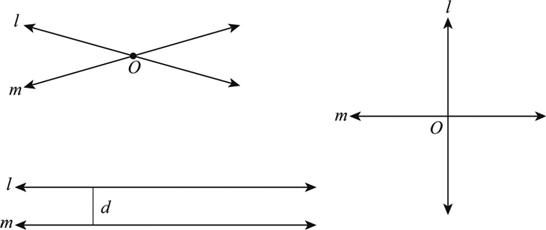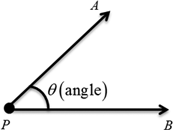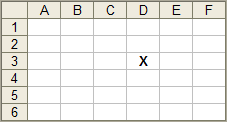State Board Commerce (XI-XII) - Test Papers
NCERT Solutions for Class 9 Maths Chapter 7 – Triangles
A triangle has three sides and three angles. The three angles always add to 180 degree. There are three special names given to triangles that tell how many sides (or angles) are equal.
There can be 3, 2 or no equal sides/angles:
Equilateral
- Three equal sides
- Threeequal angles, always 60°
Isosceles
- Two equal sides
- Two equal angles
Scalene
- No equal sides
- No equal angles
Type of Angle
Triangles can also have names that tell you what type of angle is inside:
-
Acute Triangle
All angles are less than 90°
-
Right Triangle
Has a right angle (90°)
-
Obtuse Triangle
Has an angle more than 90°
Test of Congruency
These tests describe combinations of congruent sides and/or angles that are used to determine if two triangles are congruent.
-
SSS (Side-Side-Side) Congruence
When two triangles have corresponding sides that are congruent, the triangles are congruent.
-
SAS (Side- Angle-Side) Congruence
When two triangles have corresponding sides that are congruent, the triangles are congruent.
-
ASA (Angle-Side-Angle) Congruence
When two triangles have corresponding angles and sides that are congruent, the triangles themselves are congruent.
-
AAS (Angle-Side-Angle) Congruence
When two triangles have corresponding angles and sides that are congruent, the triangles are congruent.
-
RHS (Right-Hypotenuse-Side) Congruence
When two right triangles have corresponding sides that are congruent, the triangles are congruent.
Isosceles triangle theorem
The Isosceles triangle theorem states that if two sides of a triangle are congruent, then the angles opposite to these sides are congruent.
Converse of Isosceles triangle theorem
If two angles of a triangle are congruent, then the sides opposite to these angles are congruent.
For more details refer to ncert solutions for class 9 maths chapter 7 pdf.
NCERT Solutions for Class 9 Maths Chapter 6 – Lines and Angles
Line
A line has neither initial nor terminal points with indefinite length.
![]()
The pairs of lines are nothing but the two lines, which may be intersects or parallel or perpendicular as shown below:

Angle
The region between two infinitely long lines pointing a certain direction (ray) from a common point (or vertex) is termed as an angle. That is, the amount of turn is measured by an angle, which can be commonly measured by an instrument called “protractor”. The symbol for an angle is “ ∠ ”.

The angles are classified into several types based on the angle measures:
- Acute angle:Angle that is less than 90 °
- Right angle:Angle that is exactly equal to 90 °
- Obtuse angle:Angle that is greater than 90 ° and less than 180 °
- Straight angle:Angle that is exactly equal to 180 °
- Obtuse angle:Angle that is greater than 180 ° and less than 360 °
- Complete (Full) angle:Angle that is exactly equal to 360 °
If the lines or line segments intersects, then the angles are formed. The relations between angles are characterized by the pairs of angles are:
- Complementary angles – Sum of the two angles is right angle
- Supplementary angles – – Sum of the two angles is straight angle
- Vertical opposite angles – The angles opposite each other when two lines cross is known as vertical opposite angles. . They are always equal.
- Linear pairs of angles – Alternate interior angles, alternate exterior angles and corresponding angles
Linear pair axiom
Two adjacent angles are said to be form a linear pair of angles, if their non-common arms are two opposite rays. Linear pair axiom theorems are if a ray stands on a line, then the sum of two adjacent angles so formed is 180 degree.
For more in depth knowledge refer to lines and angles class 9 ncert solutions pdf.
NCERT Solutions for Class 9 Maths Chapter 5 – Introduction to Euclid’s Geometry
Euclidean geometry is the study of plane and solid figures on the basis of axioms and theorems employed by the Greek mathematician Euclid. In its rough outline, Euclidean geometry is the plane and solid geometry commonly taught in secondary schools. For details
class 9 maths chapter 5 solutions can be referred to.
Euclid’s axioms· Things which are equal to the same thing are also equal to one another. · If equals be added to equals, the wholes are equal. · If equals be subtracted from equals, the remainders are equal. · Things which coincide with one another are equal to one another. · The whole is greater than the part. |
Euclid’s Postulates
- To draw a straight line from any point to any point.
- To produce a finite straight line continuously in a straight line.
- To describe a circle with any center and distance.
- That all right angles are equal to one another.
- That if a straight line falling on two straight lines makes the interior angles on the same side less than two right angles, the straight lines, if produced indefinitely, will meet on that side on which the angles are less that two right angles.*
Two Equivalent versions of Euclid’s fifth postulates
There are three hypotheses which are
- hypothesis of right angles
- hypothesis of obtuse angles
- hypothesis of acute angles
- The first hypothesis is called as play fair’s axiom which is equivalent version of Euclid’s fifth postulate.
The second hypothesis states that a piece of straight line can be extended. The hypothesis of acute angle is extremely false because the acute angles are repulsive to the straight line.
NCERT Solutions for Class 9 Maths Chapter 4 – Linear Equations in Two Variables
Linear equations with two variables class 9 covers introduction and methods of solving linear equations with two variables
We all know about linear equation with one variable can be represented as
ax = b where a, b are constants and x is a variable.
Linear Equations with Two Variables will have two variables, it can be represented as
ax+by = c where a, b, c are constants and x, y are variables
Linear equations with two variables can be solved by a number of methods as mentioned below
- Graphing Method
- Substitution method
- Elimination method
Graphing Method
Inorder to solve Linear equations with two variables, the students have to learn rectangular axes for linear equation graph and Quadrants of Rectangular Axes. The students will get consistent and inconsistent equations which helps in solving the variable
Substitution Method
In this method the variables are substituted with one another to get the value of the two variables. Once the value of one variable is obtained, by substituting the value of one variable the value of other variable can be obtained. When value of both the variables is placed in the equation, a balanced equation indicates right solution.
Elimination Method
In this method, the two equations are multiplied with an appropriate number such that one of the variants gets nullified because of the negative signs. By solving the equation after multiplying will give you value of one variable. By substituting the value of obtained variable, the value of the other variable can also be obtained.
Download NCERT solutions for class 9 Maths chapter 4 pdf to allow easy availability of the study material.
NCERT Solutions for Class 9 Maths Chapter 3 – Co-ordinate Geometry
Coordinate Geometry
- Introduction
- Cartesian System
- Plotting a Point in the Plane if its Coordinates are Given and
- Summary
The position of an object on a plane can be defined with the help of coordinate geometry.
What are coordinates?

Consider a plane which is continuous in both the directions. One direction can be defined as rows and the other as columns. The object can be written as D3. The letter and the numerical are called as coordinates of the box. It helps in defining a place where the lines intersect.
The Coordinate Plane: A surface with two scales one across the plane which is x-axis and the other plane which is perpendicular to x-axis is y-axis.
x-axis, values to the right are positive and to the left are negative.
y-axis, values above the origin are positive and below are negative.
The center point is referred as origin. The position of the object is pointed with the number value on axis and on y –axis. The values of x and y are the co-ordinates of the object and is also called as “rectangular coordinates”. The first co-ordinate represents value of x-axis.
Importance of Coordinate Geometry
Coordinate geometry can be helpful in following situations
- Calculating distance between the co-ordinates
- Determination of slope and equation of the line segment
- Determine lies parallel or perpendicular
- Equations of curves, circles and ellipses.
You can also download the NCERT solutions for class 9 maths chapter 3 pdf, Coordinate Geometry. Solve the questions as given at the end of the chapter to master the subject.
NCERT Solutions for Class 9 Maths Chapter 2 – Polynomials
If any given expression has more than three terms, then the expression is called as polynomials.
Types of Polynomials:
The polynomials can be classified based on the number of terms as given below
Monomial:
The polynomial with only one term is monomial
Eg: It’s a number or a number with variable
Binomial:
The polynomial with only two terms is Binomial
Eg: It has 2 monomials separated by positive or negative signs
Trinomial:
The polynomial with only 3 terms is Trinomial
Eg: It has 3 monomials separated by positive or negative signs
Constant Polynomial:
The polynomial with only constant term is Constant Polynomial
Polynomial:
The polynomial with more than 3 terms is polynomial
Eg: It has more than 3 monomials separated by positive or negative signs
Remainder Theorem
It is also called as little Bézout’s theorem
The remainder theorem can be in a very simple way as follows
Inorder to find the value of the function f(x) for a given number, n
Divide the function by x- n
The result obtained will be f(n)
Note: the remainder theorem work only function is divided by linear polynomial.
The polynomial can be positive or negative number
Factorization of Polynomials or polynomial factorization:
It is a chapter important in Maths and Computer Algebra. It is a method in which the polynomial with coefficients in a given filed is obtained after multiplication of irreducible factors with coefficients in the same domain.
Study NCERT solutions for class 9 maths chapter 2 pdf in simple and easy to understand language. Understand the types of Polynomials well; this will help in studying the chapter without doubts.











